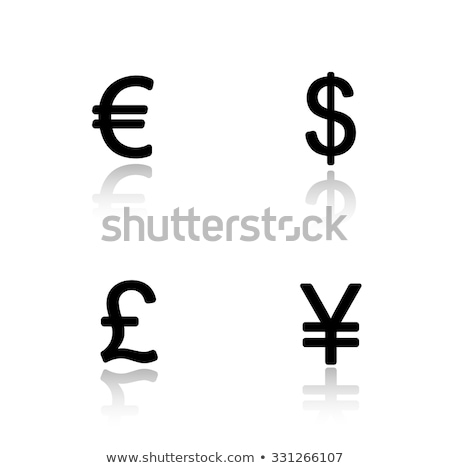
Purchasing power parity is critical for developing relatively reliable economic data that can be used to evaluate the market situations of various nations across borders. Now, we get the PPP exchange rate by dividing the price of the Big Mac in the UK by the price of the Big Mac in the US. The above logic, however, assumes that goods and services are tradable internationally. But in reality there are goods and services that cannot be traded internationally. If you have a house in London, you cannot export that house to the US or China. There are many other examples of non-tradable goods, such as public roads, basic services such as schooling, or even more trivial services such as hair-cuts.
- However, when making comparisons between rich countries and developing countries, GDP based on PPP can dramatically increase the estimated size of developing economies, usually by two to four times.
- Bucket in the United States in January 2016 was $20.50; while in Namibia it was only $13.40 at market exchange rates.
- As a general rule, the more similar the price structure between countries, the more valid the PPP comparison.
- WDI publishes PPPs for each year based on ICP results at the level of GDP and individual consumption expenditure by households (“private consumption”) and publishes PLIs at the level of GDP.
- However, since cupcakes are not traded, the market exchange rate does not incorporate the fact that they are “cheaper” in India.
The Big Mac Index is a useful example as it is one of few items that is very similar in quality, but also, widely available across the world. At the same time, it is much easier to compare one item than a basket of thousands of goods. Yet whilst the Big Mac provides a rough indication of the PPP between two countries, it is not necessarily accurate for the very reason that it only considers one good. However, it does provide a reasonable indication on the true value between currencies. In its very basic form, Purchasing Power Parity (PPP) calculates the average basket of goods in one country and compares to another in that local currency. The PPP is then calculated by converting the value in one currency, to the value in the other.
What Is Relative Purchasing Power Parity (RPPP)?
Below we discuss where PPP rates come from, and why they can often be more useful for comparisons than market exchange rates. PPP exchange rates help costing but exclude profits and above all do not consider the different quality of goods among countries. The same product, for instance, can have a different level of quality and even safety in different countries, and may be subject to different taxes and transport costs. Both of these inferences would fail to reflect the reality of their relative levels of production. These act as a cheaper factor of production than is available to factories in richer countries.
Opinion: Canadians work almost as much as Americans, yet … – The Globe and Mail
Opinion: Canadians work almost as much as Americans, yet ….
Posted: Fri, 01 Sep 2023 07:00:00 GMT [source]
Purchasing power parity is the exchange rate at which the currency of one nation must be converted into the currency of another so that the same products and services can be purchased in each country. Goods that are unavailable locally must be imported, resulting in transport costs. Imported goods will consequently sell at a relatively higher price than do identical locally sourced goods. Purchasing power parity (PPP) is a popular macroeconomic analysis metric used to compare economic productivity and standards of living between countries.
purchasing power parity (PPP)
In such cases, a PPP exchange rate is likely the most realistic basis for economic comparison. Similarly, when exchange rates deviate significantly from their long term equilibrium due to speculative attacks or carry trade, a PPP quants meaning exchange rate offers a better alternative for comparison. This “basket of goods” method, in which the cost of a fixed selection of goods and services over time is determined, is similar to how economists estimate inflation.
https://1investing.in/ is useful in explaining the long-run dynamics between price levels and the exchange rate. Although the purchasing power parity theory helps provide a reference point for understanding changes in exchange rates, it has some limitations. Firstly, limitations can arise due to the difficulty in evaluating the same basket of goods in two countries.
This is the exchange rate that equates purchasing power in the two countries. In the presence of absolute purchasing power, there are no barriers such as distance or tariffs that would have an influence on the prices of the goods. It implies that the costs of the same basket of merchandise in various nations should be equivalent when considering other costs. For example, a local currency that PPP has assessed to be highly overpriced might be predicted to fall in value relative to frequently traded currencies such as the United States dollar over time. For example, purchasing power parity is often used to check the difference between countries’ nominal GDPs. Because purchasing power varies from country to country, the figure for GDP based on purchasing power parity is often different from nominal GDP.
It does not necessarily mean that Mexicans are poorer by a half; if incomes and prices measured in pesos stay the same, they will be no worse off assuming that imported goods are not essential to the quality of life of individuals. The exchange rate reflects transaction values for traded goods between countries in contrast to non-traded goods, that is, goods produced for home-country use. Also, currencies are traded for purposes other than trade in goods and services, e.g., to buy capital assets whose prices vary more than those of physical goods.
Absolute Purchasing Power Parity Theory
If you want to live cheaply, and you can move to any country in the world, use the Big Mac Index. Also, it is doubtful that the cart’s U.S. price would accurately describe its value in rural Vietnam, where it’s needed to grow rice. This rate means that half an apple is the US is the equivalent of one apple in Mexico. This creates an arbitrage opportunity, but if the RER were 1, then we would have a situation of purchasing power parity.
PPP then computes an inflation and exchange rate as the ratio of the price of the basket in one location to the price of the basket in the other location. For example, if a basket consisting of 1 computer, 1 ton of rice, and half a ton of steel was 1000 US dollars in New York and the same goods cost 6000 HK dollars in Hong Kong, the PPP exchange rate would be 6 HK dollars for every 1 US dollar. PPP involves an economic theory that compares different countries’ currencies through a “basket of goods” approach.
- That is, ones where the Big Mac is expensive or cheap, when measured using current exchange rates.
- If the amount of goods in the basket you get is the same for both countries and the basket reflects the exchange rate, you have…
- Agreeing on broad categories (e.g. ‘food’) is relatively easy; but narrowing down the exact items is much more complicated, since allowances have to be made for differences in factors such as product quality.
The data source is OECD national-accounts publications for all countries except Hungary and Kenya, and United Nations (1973) for the latter two countries. For Hungary, GDP data are not available and a less-inclusive concept of domestic production, “net material product,” must be used. In addition to methodological issues presented by the selection of a basket of goods, PPP estimates can also vary based on the statistical capacity of participating countries. The International Comparison Program, which PPP estimates are based on, require the disaggregation of national accounts into production, expenditure or (in some cases) income, and not all participating countries routinely disaggregate their data into such categories. • Some forex traders use PPP to find potentially overvalued or undervalued currencies.
Comparing a Country’s Output
Price differences are therefore a function of transportation costs, taxes, and the prices that may be realized in individual markets. In 2013, an iPad cost about twice as much in Argentina as in the United States. The EKS method (developed by Ö. Éltető, P. Köves and B. Szulc) uses the geometric mean of the exchange rates computed for individual goods.[9] The EKS-S method (by Éltető, Köves, Szulc, and Sergeev) uses two different baskets, one for each country, and then averages the result. While these methods work for 2 countries, the exchange rates may be inconsistent if applied to 3 countries, so further adjustment may be necessary so that the rate from currency A to B times the rate from B to C equals the rate from A to C. Poverty, tariffs, transportation and other frictions prevent trading and purchasing of various goods, so measuring a single good can cause a large error. The PPP term accounts for this by using a basket of goods, that is, many goods with different quantities.
It seeks to equalize currencies to determine the value of a basket of goods. Purchasing power parity (PPP) is the idea that goods in one country will cost the same in another country, once their exchange rate is applied. According to this theory, two currencies are at par when a market basket of goods is valued the same in both countries. This measure of relative PPP shows that the currency in country B has depreciated by 0.25 or by 25 per cent. The law of one price is based on the idea that other things being equal, identical items sold on a worldwide market should have the same price. Suppose the price of a pen in the United States is $2, and the price of the same pen denominated in tenge, the currency of Kazakhstan, is ₸37.
This adjustment attempts to convert nominal GDP into a number more easily compared between countries with different currencies. This means that the statistics are only available at infrequent intervals. In order to get this data, thousands of surveys have to go out to hundreds of nations and millions of companies.

The quality of clothing or electronics may also differ – so there is no fool-proof way of comparing two products in different countries. The relative PPP theory gives a measure of the change in the exchange rate under the conditions of changes in relative prices. When explaining trade between countries, PPP does not consider the transportation cost of moving goods between nations. It is much more expensive to bring goods from China to the US than from the UK to the US. This makes imported goods more expensive, which is not necessarily reflected in the exchange rate. Third, many goods are also not traded easily, and even tradeable goods are not always perfect substitutes when they are produced in different countries.
In other words, the purchasing power of the British Pound is higher in Spain than in England. This difference in price levels is exactly what PPP conversion rates try to capture. GDP is measured using prevailing national prices to estimate the value of output. This means that in order to make meaningful cross-country comparisons, it is necessary to translate figures into a common currency – i.e. use a consistent ‘unit of measure’. People in different countries typically consume different baskets of goods.

This is one of the core driving factors in driving businesses to China where costs are comparatively lower. Whoever might be the originator of the basic idea of the PPP theory, it was Gustav Cassel, a Swedish economist, who reformulated the PPP theory and developed the concept of an equilibrium rate of exchange in 1920. This tells us that the exchange rate that would give us parity on the price of pens would be when there are exactly ₸18.5 per $1. At a higher or lower rate, one location offers greater purchasing power than the other. Assume that inflation in the U.S. causes the real price of goods to increase by 4%, while it also causes the price of identical goods in Australia to increase by 2%. From the values above, we can clearly see that the U.S. has suffered more inflation because the value has moved faster than that of Australia by 2 points.
